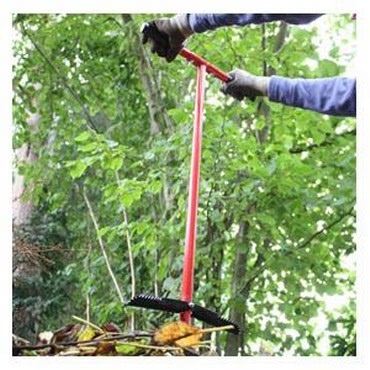Turning to Composting!
We have a medium size garden about 0.25 acre with plenty of lawn. We let some of the grass grown long under our apple trees. We have a large compost pile at the moment but need to get more organised. My husband damaged his back so I am concerned how often compost needs turning in traditional bins. At the moment, he turns our big heap from time to time, but it doesn't get hot enough - seeds from it flourish although it does seem to be good on the garden other than this.
Please could you advise how often compost in traditional bins needs turning or if it is possible to use them to compost without turning at all. We have space for multiple square bins if this it is sensible to put in thinner layers of grass cuttings, ordinary garden waste, fallen apples etc. Multiple tumbling bins would be very expensive and quite difficult to place in the garden.
I appreciate any advice you can give us before we start investing in a solution.
Sarah Owen-Jones
Dear Sarah
It’s notoriously difficult to predict how often the contents of an established compost heap will require turning but traditionally, gardeners have tended to turn their bins when they add new material. This is rather an old fashioned method of composting and you’ll be pleased to hear there are alternative, far easier, methods you can use. I’ll explain...
To begin with, it’s not actually essential to turn a heap if you build it correctly to start with. This involves creating plenty of air spaces which is just what you are trying to achieve when you turn material. Add in plenty of egg boxes, corrugated cardboard, kitchen and toilet roll centres, scrunched up paper and cardboard and lots of twigs and branches when building your heap and these bulky compostable materials will create the essential air spaces required for the composting process to occur. You may wish to create a layer of twigs and branches at the bottom of the heap to help create an airway as well.
This is all very well if you are starting a heap but an established heap not constructed in this fashion will need some kind of aerating. You don’t have to resort to the back breaking task of forking the material over as there are compost stirrers and aerators available which require much less effort. You can also plunge a hefty stick or broom handle into the heap every week or so as well; this may sound crude but essentially you are doing exactly the same thing – creating air spaces!
The question of how to get your compost hotter and hopefully kill off those weed seeds takes a little more organising. Basically, the larger the volume of material you add to a compost bin in one hit, the hotter the core temperatures and the more likely that weed seeds will be killed. Adding little and often is known as cool composting and as you say, the finished material is just as good but is likely to contain weed and other seeds as a sufficient temperature is not reached to fry them!
Therefore, you’ll need to add large amounts of mixed (half green, half brown) material in one go to create the higher temperatures needed to finish off seeds, and you will get useable compost in weeks rather than months following this method. This necessitates providing a mixing or holding area to store material before dumping it all in a bin, but you could also make sure you compost any weeds before they flower or seed.
Finally, you might want to try grassboarding. This isn’t an extreme sport but a way of producing excellent compost from predominantly grass cuttings and kitchen waste, mixed thoroughly with paper, cardboard and egg boxes, for example. This is a great way of getting rid of a glut of grass clippings as adding them exclusively to a ‘normal’ heap can result in a slimy wet, smelly mess!
Martin

























